Samsung donates $28K of Virtual Reality Equipment to UT Dallas for VR course

This semester Samsung Electronics America, a global leader in technology, donated 30 Samsung Gear VR (virtual reality) Innovator Edition head-mounted displays (HMDs) along with 30 Samsung Galaxy S6 smartphones to the UT Dallas Virtual Reality course instructed by Dr. Ryan McMahan.
The donations would not have been possible if it were not for the generosity of Nick DiCarlo, Vice President and General Manager of Immersive Products & Virtual Reality at Samsung Electronics America. DiCarlo visited UT Dallas on September 3rd and spoke to the forty-three students enrolled in the course about the Gear VR headsets that he distributed on behalf of Samsung Electronics.
When asked about the donations, Nick DiCarlo responded, “It was our belief that UT Dallas students, by virtue of their age and education are truly native to the digital world we now inhabit. Donating devices to students taking this course allows us to skip generations and go right to the future builders of virtual worlds, today. We hope they learn a great deal about virtual reality, show their families and friends what they are working on, and we hope to learn from them as well about what VR could be in the future.” DiCarlo goes on to include, “Samsung is closely involved with the community in a variety of ways, and especially with STEM education and with UT Dallas. UT Dallas and Professor Ryan McMahan in particular are already deeply involved in virtual reality with a rich set of facilities that let students explore the potential of this medium. It was a great opportunity to be able to work closely with them.”
Dr. McMahan’s CS 6334 Virtual Reality course provides an in-depth overview of VR, including input and output devices, 3D navigation techniques, 3D selection and manipulation, system control techniques, interaction/scenario/display fidelity, design guidelines, and evaluation methods. The students enrolled in the course this semester will learn the same concepts above, but in the context of mobile VR.
More often than not, VR systems are limited to research labs with expensive stationary equipment, making it difficult for a student to gain needed access to learn about and work with VR technologies. Dr. McMahan, who has been teaching the course on Virtual Reality for several years, notes, “Over the years the students have been implementing immersive applications in the UT Dallas Motion Capture Lab. Now, with the donations from Samsung, the students are able to use state-of-the-art mobile VR technology to create immersive applications that may eventually reach consumers through the Oculus store. It is a great opportunity for the students, UT Dallas, and Samsung.”
During the span of the course, students will be working on developing small applications to learn how to provide travel abilities, manipulation abilities, create graphical user interfaces within the virtual environments, and create multiplayer experiences. Students may try to pursue creating a VR game, which could include proof-of-concept interaction techniques such as gaze-directed steering and ray-casting manipulation. On the other hand, they may try to work out or solve some hardware limitations, like adding hand-based interactions with additional devices.
The students and Dr. McMahan will also have a chance to work with the VR developers and the business team from Samsung Electronics Dallas-based research team, both in planning and reviewing course projects. Samsung Electronics America has had a large presence in Richardson, Texas since the 90’s. The team that created the original concept for the Gear VR works out of the Richardson office, and today, the team dedicated to virtual reality is there as well.
Released just this year, Samsung’s Gear VR Innovator Edition, powered by Oculus, an American virtual reality technology company, is a smartphone-powered headset that works exclusively with the new Samsung Galaxy S6 and S6 edge and delivers an advanced immersive experience by using 2D and 3D 360-degree video, photos, and games. The phone acts as a computer for running the VR applications that the course students will be working on, as well as the graphical display. The headset also includes a touchpad control and a dedicated back button. Students will be working on the “Innovator Edition,” which is specifically designed for VR developers, enthusiasts, mobile experts, and professionals.
The donations made by Samsung are valued at $28K. With the donations, UT Dallas now offers the only college course in the world, known to Samsung, which is using the new Gear VR to teach virtual reality.
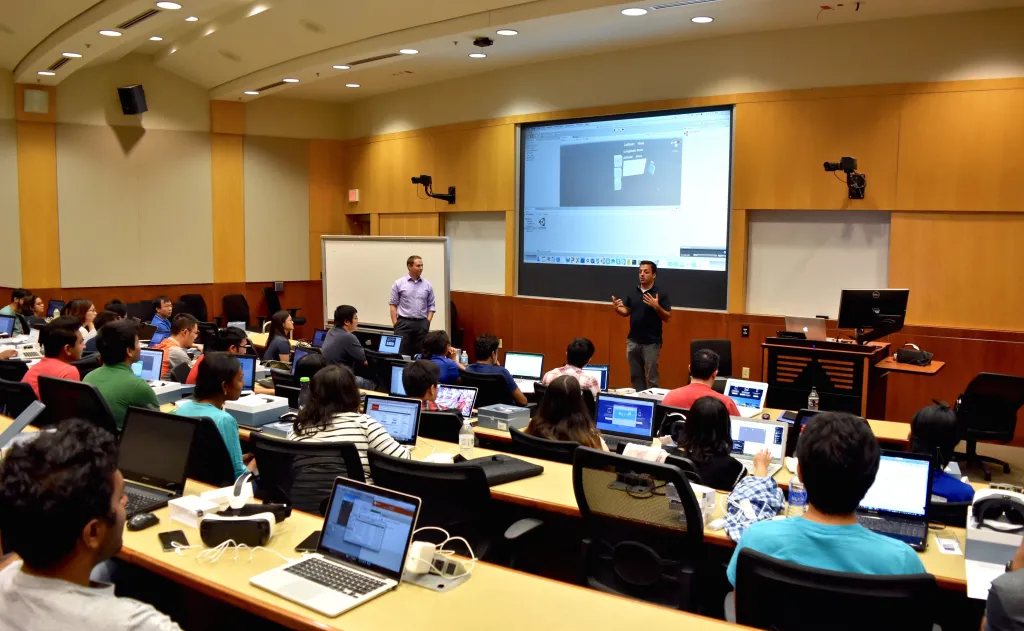
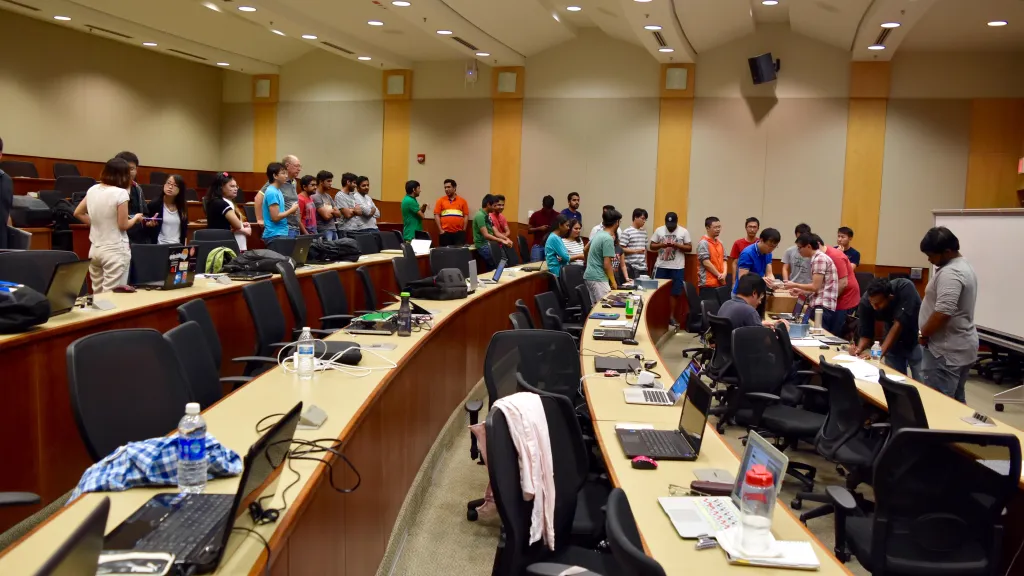
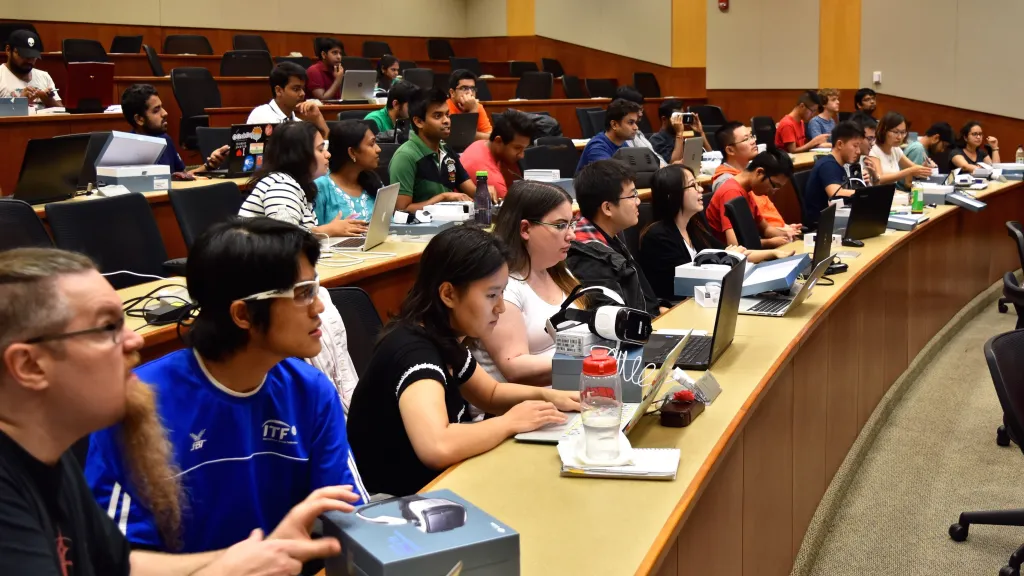

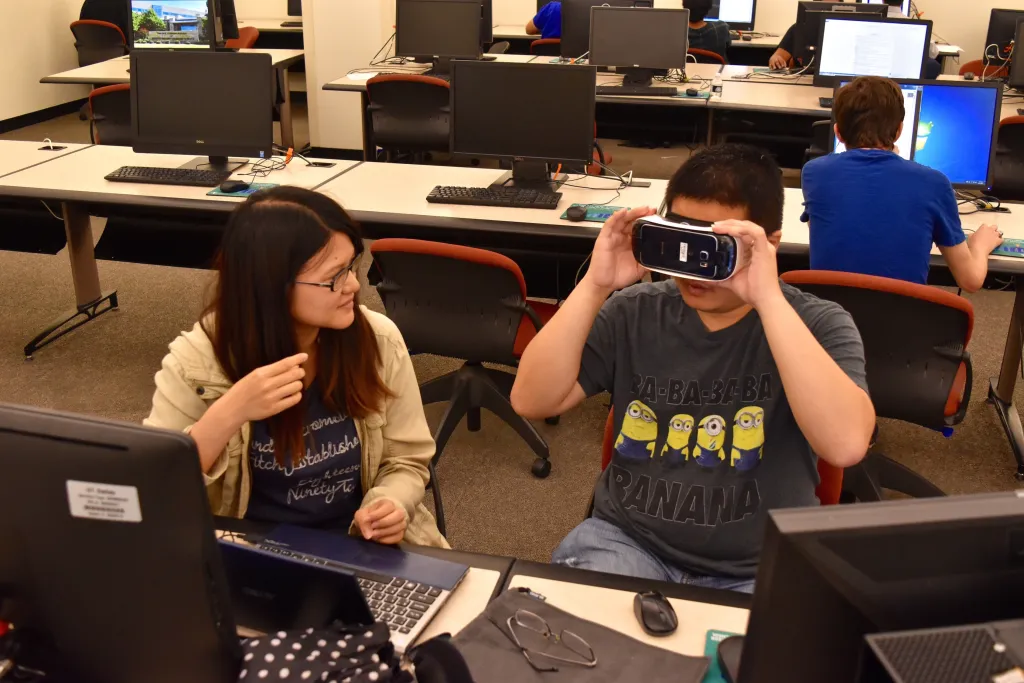
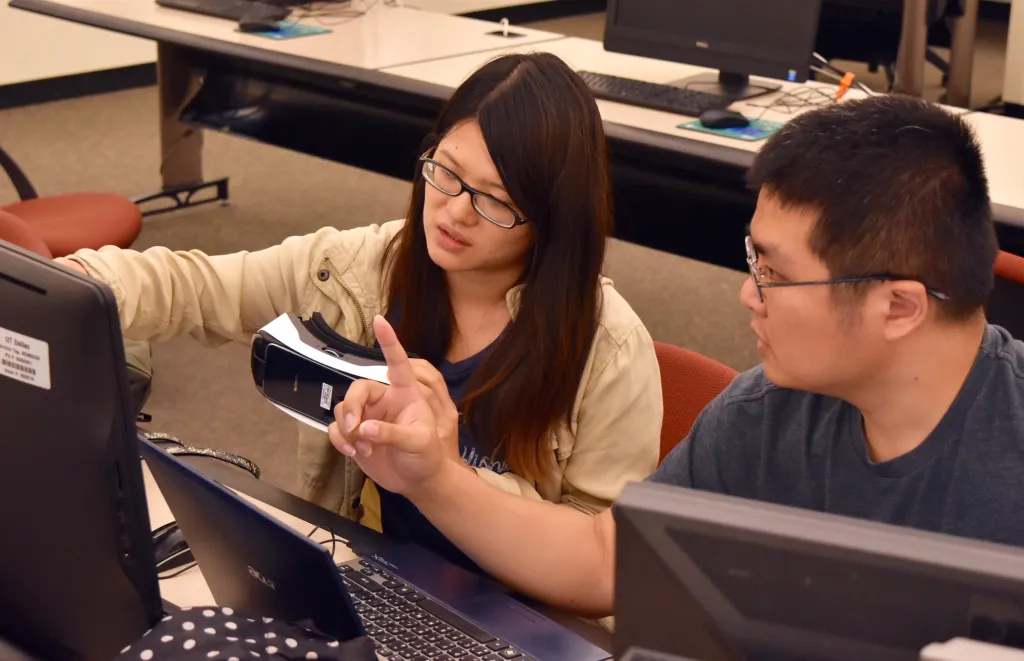
About the UT Dallas Computer Science Department
The UT Dallas Computer Science program is one of the largest Computer Science departments in the United States with over 1,600 bachelor’s-degree students, more than 1,100 master’s students, 160 PhD students, and 80 faculty members, as of Fall 2015. With The University of Texas at Dallas’ unique history of starting as a graduate institution first, the CS Department is built on a legacy of valuing innovative research and providing advanced training for software engineers and computer scientists.




